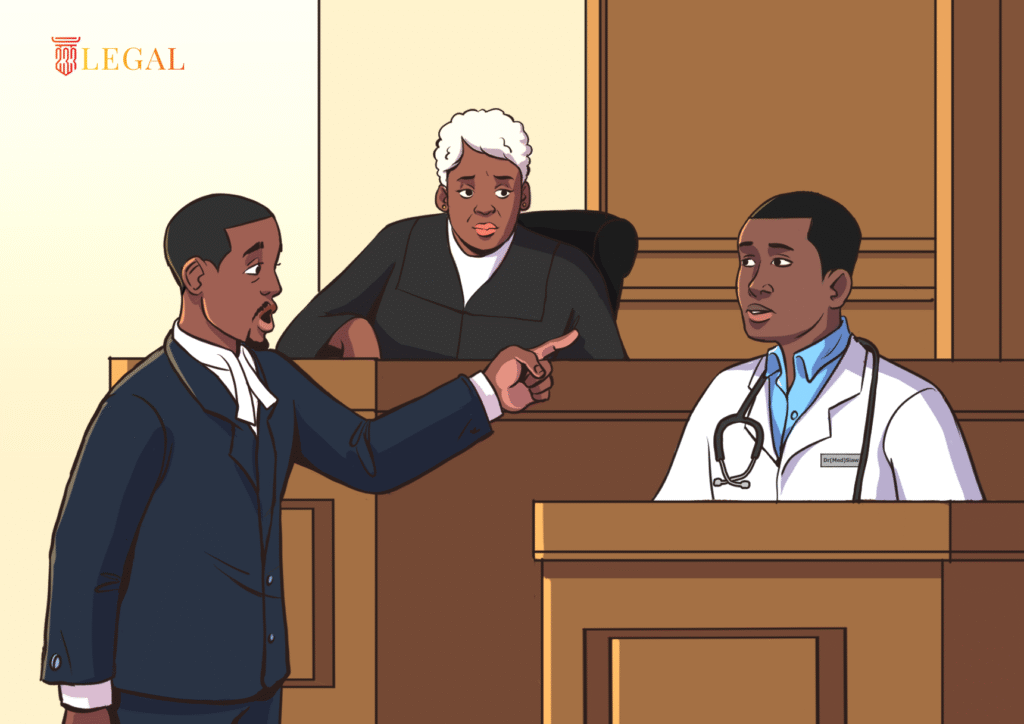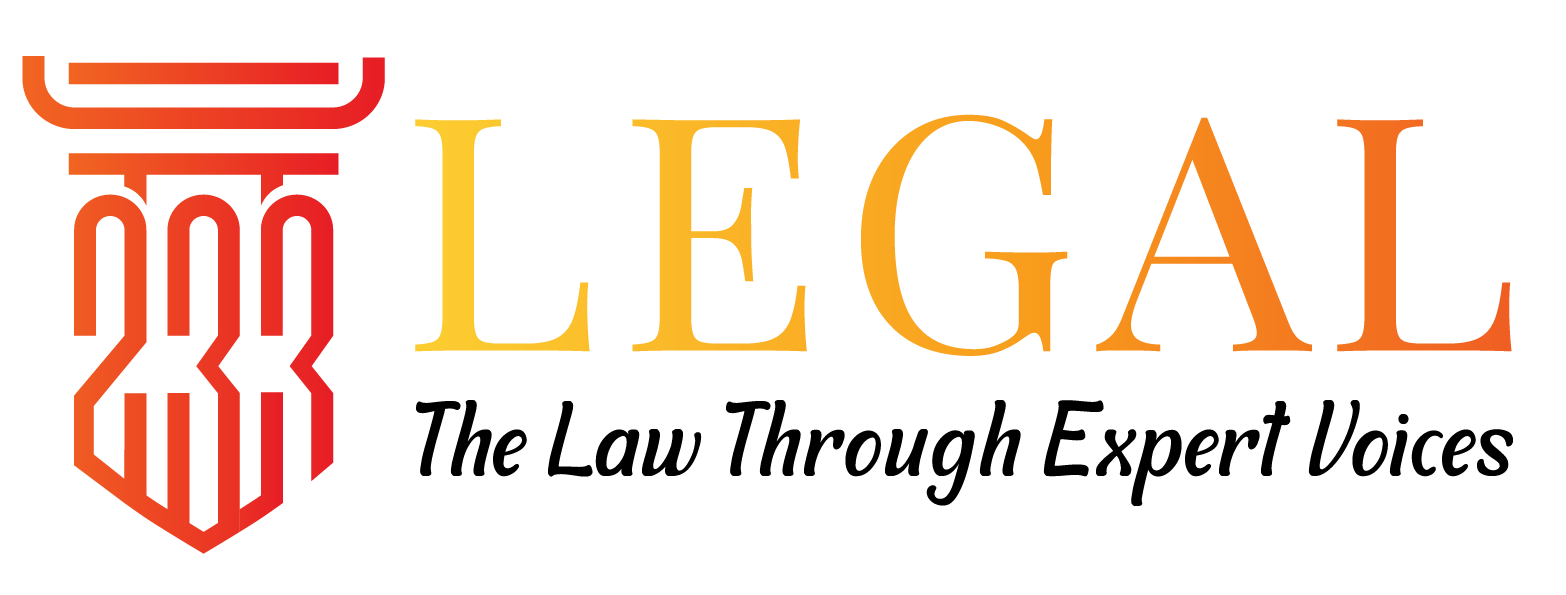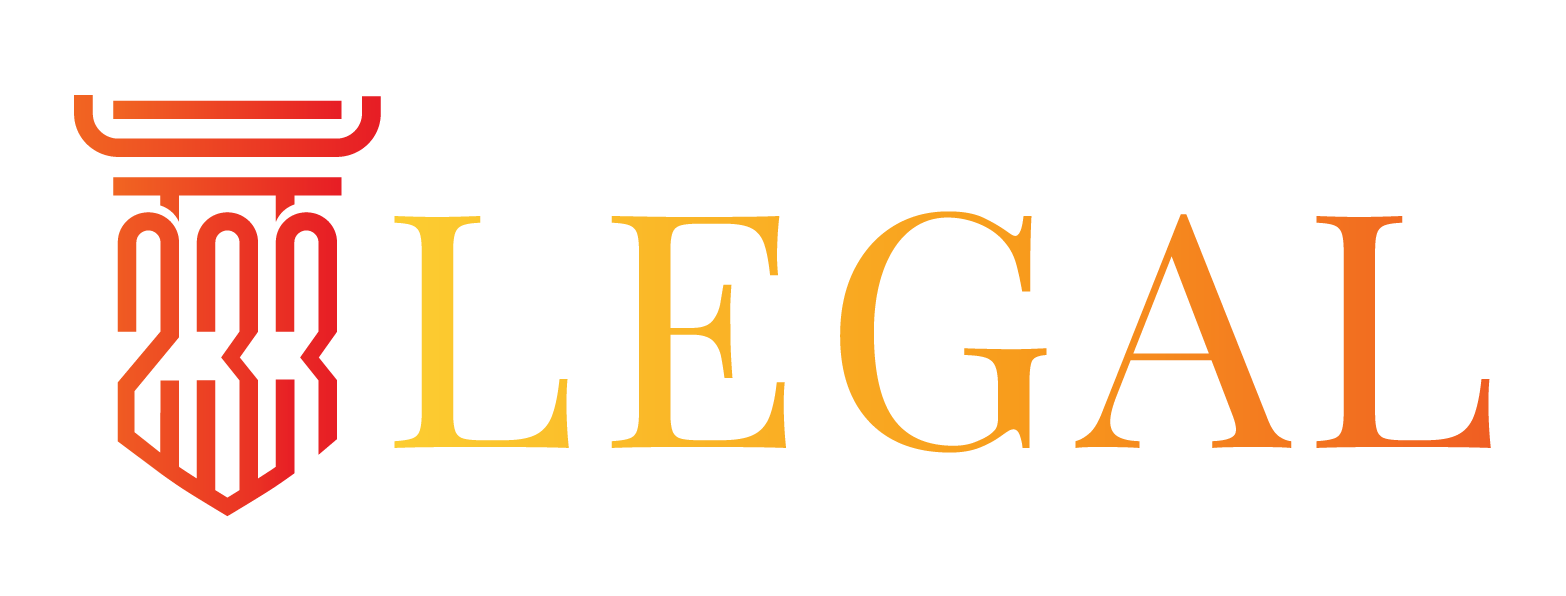
Published June 22, 2025
INTRODUCTION
It is a great honour and privilege for me to address you this afternoon at this august gathering – a symposium organized by Patient Rights Watch Ghana.
Originally, it was my esteemed and distinguished senior brother, His Lordship Justice Kweku Tawiah Ackaah-Boafo, JA who was billed to address you this afternoon but as fate would have it, he is now scheduled to appear before the Appointment Committee of Parliament this afternoon for vetting to the Supreme Court Bench. Please join me in wishing my senior brother well.
I thank His Lordship for giving me the opportunity to share my own thoughts with you on the topic: “The Nexus Between Law and Patient Safety in Ghana”. This topic is in line with the theme of the symposium titled: “STEMMING THE WAVE OF IATROGENIC INJURIES AND DEATHS IN GHANA”.
I also thank the executives and members of Patient Rights Watch Ghana for organizing this symposium and for accepting me as a substitute for Justice Ackaah-Boafo. I cherish the hope that my contribution would approach the high standard associated with Justice Ackaah-Boafo’s work.
Over the years there has been a phenomenal increase in reported cases of alleged medical negligence in Ghana. Most of these cases are a result of serious injuries and deaths of patients due to various factors, including medical errors, adverse reactions to drugs, surgical mistakes, or unintended side effects of medical interventions.
Interestingly, only few of these cases end up in court or go through administrative and disciplinary inquiries or any form of settlement. This is mainly because most of the alleged victims or their next of kin lack the wherewithal to mount legal challenges or they simply “surrender all to God” as many Ghanaians do in times of trials and tribulations. In fact, in some of these cases the victims are not even aware that their right to safe medical treatment has been violated in the first place. The well-deserved respect for our healthcare professionals has elevated them to the position of infallible beings in the eyes of a section of our society making it impossible for them to question their work.
It is also observed that the health delivery sector has its fair share of the culture of cronyism and this has promoted cover-ups in the disclosure of adverse events at some of the health facilities. These have created a climate where healthcare professionals are sometimes not held accountable for their failures. Indeed, the wave of injuries and deaths in Ghana resulting from medical malpractice is anathema to our health care delivery system and a blot on the conscience of the nation.
Medical malpractice occurs when a hospital, doctor, or other healthcare staff, through a negligent act or omission, causes an injury to a patient. Malpractice represents the link between medicine and law and can be categorised into two areas of law i.e. tort of medical negligence and criminal law. Criminal liability may result from an egregious action on the part of healthcare professionals that violates a criminal statute in force.
In discussing the nexus between the law and patient safety, the presentation will focus on medical negligence litigation and the compensation system associated with it. This is important because tort of medical negligence projects the features of the impact that law can have on patient safety. It is also important because litigation does not only allow parties to seek remedies for wrongs but also develops legal standards, raises awareness about social issues such as patient safety and serves as a precursor for law reforms. Consequently, the discussion will focus on the common law principles that must be proven in order for a healthcare professional to be found liable for negligence. The presentation will also identify the challenges synonymous with medical negligence litigation. To surmount the litigation challenges and to ensure higher standards of patient safety, this paper will make a proposal for legislative intervention aimed at bolstering the patient safety regime in Ghana.
- TORT OF MEDICAL NEGLIGENCE LITIGATION – WHERE THE LAW IS DEPLOYED TO PROTECT AND PROMOTE PATIENT SAFETY
The starting point in any action relating to tort of negligence is to establish a duty situation between the claimant and the defendant. The defendant must owe the claimant a duty of care. As pointed out in Donoghue v Stevenson [1932] AC 562 at 619: “the cardinal principle of liability is that the party complained of should owe to the party complaining a duty to take care, and that the party complaining should be able to prove that he has suffered damage in consequence of a breach of that duty”.
In his book, Introduction to the Law of Torts in Ghana, Second Edition, Black Mask Ltd 2019 at page 119, the learned author, Kofi Kumado also wrote: “a person cannot be held negligent in torts law, unless he owed some duty to the plaintiff and that duty is breached”.
A plaintiff in a negligence case must prove a legally recognized harm, usually in the form of physical injury to a person or to property. It is not enough that the defendant failed to exercise reasonable care. The failure to exercise reasonable care must result in actual damages to a person to whom the defendant owed a duty of care.
Also, for the defendant to be held liable for the tort of negligence there must be a causal link between the conduct of the defendant and the claimant’s damage. Therefore, despite the defendant owing a duty of care and being in breach of that duty, the defendant will not be liable unless his conduct has caused the claimant’s damage and that damage is not too remote in law. In determining causation in fact, the courts rely on the ‘but for’ test. See Cork v Kirby MacLean Ltd [1952] 2 All ER 402.
The common law principles of duty of care, breach of duty, and damage from the breach suffered by the patient to whom the duty is owed remain the critical pillars that must support any successful medical negligence action.
It is an established legal concept that a healthcare professional has a duty of care towards the safety and wellbeing of a patient. Once a person becomes a subject of clinical care, a duty of care is established and the healthcare professional is expected to provide treatment and advice to the patient with reasonable care and skill. Duty of care is a byproduct of medical care. In view of this, duty of care is not a highly contentious issue in medical negligence litigations.
It may also not be contentious that a patient has suffered injury or death. The fact of injury or death speaks for itself. However, injury suffered by a patient in the course of clinical care does not automatically suggest that the healthcare provider is liable for negligence. In exceptional circumstances, a claimant may not directly prove breach of duty of care but the principle of res ipsa loquitur can be applied to prove negligence. The essence of the doctrine of res ipsa loquitur (the thing speaks for itself) is that where harm occurs such as would not in the ordinary course of things have occurred without breach of a duty of care, negligence can be implied. See Asafo v Catholic Hospital of Apam [1973] 1 GLR 282.
In Asantekramo alias Kumah v Attorney-General [1975] 1 GLR 319, a female patient of the then Okomfo Anokye Hospital had an arm amputated following an operation for an ectopic pregnancy. The facts show that in 1967, the 19-year-old woman (plaintiff) was diagnosed as having a ruptured ectopic pregnancy in a private clinic in Kumasi and was referred to the then Okomfo Anokye Hospital (now the Komfo Anokye Teaching Hospital). The surgery was successful but the arm of the patient in which the intravenous line was set subsequently became gangrenous and infected and needed to be amputated. After a full trial (which included medical expert testimonies), the court applied the doctrine of res ipsa loquitur and came to the conclusion that the resultant amputation could not have happened but for the presumptive negligence of the hospital. The court entered judgment for the patient and awarded heavy damages against the hospital.
In spite of the influence of the doctrine of res ipsa loquitur in tort of negligence jurisprudence, the real bones of contention in most medical negligence cases are founded on whether the defendant has breached his duty of care and whether the breach led to the injuries suffered or the death of the patient.
In determining whether there is a breach of duty of care, it must be established that the medical practitioner failed to act as a reasonable and prudent practitioner. The breach must be palpably obvious to the extent that the practitioner can be said to have failed to perform his or her role in a proper and workmanlike manner in accordance with good and prudent medical practice as expected of an ordinary practitioner. As set out in the landmark authority of Bolam v Friern Hospital Management Committee [1957] 1 WLR 582, the standard of care required of a medical practitioner is the standard of the ordinary skilled person exercising and professing to have that special skill.
In Dr. Sandys Abraham Arthur v. The Ghana Medical and Dental Council Civil Appeal No. H1/214/2012 (delivered 31 July 2012), Ofoe JA commented on the standard of care required of a medical officer as follows:
“I will agree with the appellant when he contended that in diagnoses and treatments there are differences of opinion between medical officers. A medical officer is not negligent merely because his conclusion differed from the other professional or because he displayed less skill or knowledge than the other. As stated in the case of Hunter v. Hanley 1955 SC 200 and Whitehouse v. Jordan (1980) 1 ALLER 650 cited by the appellant, the true test in establishing negligence in diagnosis or treatment on the part of a doctor is whether he had been proved to be guilty of such failure as no doctor of ordinary skill would be guilty of acting with ordinary care. Fair and reasonable standard of care and competence are required … Wrong diagnosis per se should therefore not result in a finding of negligence.”
Also, in Kwaku Agyire-Tettey and Paul Kwaku Sodokeh v. The University of Ghana and 2 Others, HC, Suit No. GJ150/2016 (delivered on 19 Dec 2018), Ackaah-Boafo J (as he then was) had this to say on the subject:
“The duty of care owed by a physician working in his capacity as a physician is not to fall below the standard expected of him or her. To that extent it is my opinion that physicians have a duty to conduct their practice in accordance with the conduct of a prudent and diligent doctor in the same circumstances of their basic training. The standard has also been described as the “degree of skill, care, and learning ordinarily possessed and exercised by other physicians in similar circumstances” (Bryars Estate v. Toronto General Hospital (1997), 1997 CanLII 2381 (ON CA), 152 D.L.R. (4th) 243 (Ont. C.A.) at paragraph 19.”
It must not be lost on us that not every single error of judgment would amount to medical negligence. An error of judgment will amount to medical negligence only if such error would not have been made by a reasonably competent medical practitioner with the standard and the type of skill concerned, acting with ordinary care. See Whitehouse v Jordan [1981] 1 WLR 246, HL.
Before medical negligence can be established, there must be a causal link between the breach of duty of care and the resulting injury or fatality suffered by the patient. There must be no equivocation in the fact that but for the negligence, the injury would not have occurred. This is critical for a finding of proximate cause between the acts (or non-actions) of a healthcare professional and the injury suffered by a patient in an action for medical negligence.
When a claimant alleges negligence leading to injury, the evidential burden is placed on such a party to provide sufficient evidence to prove that the defendant indeed breached a duty of care owed to him and this breach of care was the proximate cause for the injury. In Elbourne v Gibbs [2006] NSWCA 127, Basten JA expressed the position of the law in the following words:
“Where it is demonstrated that a defendant has breached a duty owed to a plaintiff, and harm has followed, it would be understandable that the law might impose an onus on the defendant to show that his or her breach of duty had not caused the harm. However, that course has not been taken and it is clear beyond doubt that the burden of establishing causation lies on the plaintiff.”
It is concluded from the foregoing that medical negligence litigation is a tool designed to promote and protect patient safety. I say so because the endgame of the litigation process does not only result in compensation of victims but has long shaped – and continues to shape – overall patient safety. Medical negligence litigation plays a crucial role in ensuring patient safety by incentivizing and promoting best safety practices; by identifying and addressing systemic failures; and by promoting transparency within the health care delivery space among others. If for nothing at all, the reputational risk associated with negligence litigation has mostly motivated healthcare facilities and their staff to adopt best safety practices in the treatment of patients.
The litigation process is, however, not seamless after all – it is fraught with challenges.
- MEDICAL NEGLIGENCE LITIGATION AND ITS CHALLENGES
Medical negligence litigation is often complex and expensive. It requires a detailed analysis of medical evidence and expert opinions. More so, the award of damages does not normally reflect the loss suffered by victims. This section highlights some of the challenges synonymous with medical negligence litigation under the following headings:
- Inadequate compensation
- Risks associated with treatments
- Role of experts
- Expense
Inadequate compensation
When a claimant in medical negligence action succeeds in proving his case, the quantum of damages, particularly non-pecuniary damages, for injuries such as loss of life, damage to health and diminution of economic and social well-being are very difficult to assess. In the Canadian case of Teno v Arnold [1978] 2 S.C.R. 332, the court expressed its frustration as follows:
“There remains the assessment of the quantum of non-pecuniary damages. These damages are spoken of as ‘compensation’ for pain and suffering, loss of amenities of life, loss of expectation of life – a grant of largely subjective considerations the very naming of which indicates the impossibility of precise assessments.
The real difficulty is that an award of non-pecuniary damages cannot be ‘compensation’. There is simply no equation between paralysed limbs and/or injured brain and dollars. The award is not reparative; there can be no restoration of the lost function.”
In many instances, the damages awarded are not adequate to compensate the victims of medical negligence. In view of this, it is better to have a robust regulatory framework to prevent the occurrence of medical negligence.
Risks associated with treatments
Clinical treatments while aiming to improve health of patients also come with its own risks of possible harm. The situation becomes more precarious if it involves clinical trials. The severity of a patient’s condition may also contribute to the risk of the procedure or treatment ending up with complications. The risk factor associated with medical treatments was recognized by the English Court in Hucks v Cole, (1993) 4 Med. L.R. 393, where the court stated that:
“…with the best will in the world, things do sometimes go amiss in surgical operations or medical treatment … So a doctor is not to be held negligent simply because something goes wrong.”
The risks associated with clinical treatments and surgical procedures make proof in a negligence case very challenging – establishing the causal link between the resultant injury and the alleged breach of duty in the circumstances described above is often complex. Depending on the treatment, there may be a thin line between negligence on the part of a medical doctor and the complications related to the treatment.
Expert evidence
Medical negligence disputes are characterised by very technical medical issues which judges by the nature of their training sometimes find difficult to comprehend. The end-results may be judgments that are incompatible with facts in issue and evidence on record. In her article, MEDICAL NEGLIGENCE IN GHANA – ANOTHER LOOK AT ASANTEKRAMO, Postgraduate Medical Journal of Ghana Vol. 2, No. 1 (March 2013), Plange-Rhule, G criticized the court in the Asantekramo case supra. According to the learned author, the judge made certain incorrect interpretations of the medical facts that led to the court’s conclusion that the hospital was negligent. She emphasized that the judge’s conclusion that the infection resulted from a contaminated IV apparatus may not be accurate as from the facts, it was more likely that the initiating event was ‘compromise to blood flow’ leading to infection. It is noted that Dr. Gyikua Plange-Rhule is a medical practitioner and a lawyer. Her erudite article was based on medico-legal perspectives and her views clearly demonstrate some of the challenges faced by the court in handling medical evidence.
It cannot be gainsaid that expert evidence is vital in medical negligence cases. Medical experts provide insights into standard medical practices and help the court understand complex medical issues. Their input can be decisive in proving breach and causation.
Indeed, the evidence of an expert witness is not binding on the court. It is at best persuasive. See Fenuku v John Teye [2001-2002] SCGLR 985. However, the court must not take expert evidence lightly. It should only depart from it when it has good reasons to do so.
Expert evidence, however, has its own problems. The problem of bias is said to be synonymous with expert testimonies as bemoaned by the court over a century ago in Lord Arbinger v Ashton (1873) 17 LR Eq 358 @ 374:
“Undoubtedly there is natural bias to do something serviceable for those who employ you and adequately remunerate you. It is very natural, and it is so effectual that we constantly see persons, instead of considering themselves witnesses, rather consider themselves as the paid agents of the person who employs them.”
As stated early on, the court is not bound by expert testimony – it is the duty of the court to arrive at its own conclusion after hearing the experts. The danger remains that a partisan expert can mislead the court.
The use of court-appointed experts and defining a clearer role for these experts as recommended by Lord Woolf in his UK Access for Justice Report is also seen as capable of usurping the role of the judge in deciding a case.
In the circumstances, it is safer to settle some of the medical negligence disputes through expert determination or other dispute resolution mechanisms relevant to the needs of disputants, as under those processes parties tend to agree on the choice of a referee making the issue of bias, sympathy and incompetence largely curtailed.
Also, the use of alternative dispute resolution processes may provide comfort to medical practitioners while ensuring that they are held accountable for malpractice. This is because the proliferation of medical negligence suits coupled with the adversarial nature of litigation have the potential of fueling unnecessary apprehensions on the part of medical practitioners in the performance of their tasks.
Expense
In addition to the above challenges, the high costs of litigation in many countries including Ghana, have discouraged individuals from going to court to vindicate their rights. In Ghana, there is an opportunity for legal aid per the Legal Aid Scheme. The Scheme is guaranteed under Article 294 of the Constitution and Parliament has also enacted the Legal Aid Commission Act of 2018 (Act 977) to provide the statutory basis for the implementation of the legal aid scheme. The Scheme is set up for the benefit of the poor, marginalised and vulnerable groups who are unable to afford the services of a lawyer. Lack of resources has, however, affected the effective functioning of the Scheme.
A vibrant non-governmental organization such as Patient Rights Watch Ghana may not have adequate resources to prosecute some of these medical malpractice cases on pro bono basis. In the circumstances, the most effective means available in promoting patient safety is the existence of a robust regulatory regime backed by an effective healthcare regulator.
- LEGISLATIVE PROPOSAL
In the light of the above, I propose a legislative intervention in the enactment of Patient Safety Act.
I am not oblivious of the fact that there are ethical rules guiding health professionals. These rules also require them to protect the safety of their patients. Pieces of legislative provisions relating to patient safety also exist. For instance, Ghana’s Patient Charter has been incorporated into the Public Health Act, 2012 (Act 851), specifically section 167 of the Act. The purpose of the proposed Patient Safety Act is to have a single legislation that focuses on patient safety. Beside the enactment of new rules, the Act is also expected to absorb existing ethical rules and statutory provisions relating to patient safety.
The proposed legislation is aimed at encouraging healthcare professionals to improve the safety and quality of health care; and to provide an environment in which healthcare practitioners are obliged to report patient safety incidents. Other patient safety related matters could also be addressed by the legislation.
It is proposed that the Patient Safety Act adopts a Safety Case Regime for the regulation of patient safety in our health care delivery system. Under the law, healthcare providers should be expected to present a document demonstrating their understanding of the risks and hazards and the risk management measures put in place to minimize or mitigate the risks of iatrogenic injuries and deaths. This goal setting approach enables the healthcare regulator to set the general goal (benchmark) but the detail is left to healthcare providers to work out the formal safety and quantitative risk assessments (QRAs) backed by independent verification to ensure compliance with stated goals.
The safety case regulatory approach – which is being advocated in this proposal – is flexible, less expensive and easy to comply with, as it comes with a sense of ownership on the part of healthcare providers. Indeed, healthcare providers are best suited to establish clear policies and procedures to address patient safety issues within their environment. Under the safety case regime, healthcare professionals are empowered to implement homegrown strategies that directly improve patient safety. These strategies must be in line with the benchmark set by the regulator.
It is further proposed that the Act makes it mandatory for healthcare providers to report and disclose adverse patient safety incidents to the regulator. The law should protect the confidentiality of reported information to encourage reporting. The data collected should be used to analyze trends, identify risks, and implement improvements in health care practices. Failure to report adverse patient safety incidents should attract sanctions.
- CONCLUDING REMARKS
It is not in doubt that the law provides a conducive framework for health care delivery services to thrive. The causal link between law and institutional reforms cannot be underestimated. Through law reforms, societies can introduce new ideas to change unhealthy systems. It therefore goes without saying that law being an instrument for change, is also an effective tool in the promotion of patient safety in Ghana.
It is for these reasons that I humbly invite all stakeholders in our health care delivery system to join the discussion on what legal reform is appropriate to enhance patient safety in Ghana.











